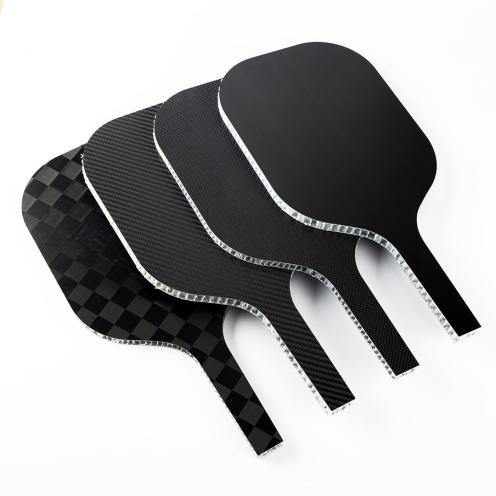Beautiful Plants For Your Interior

Various Types of Paddle Surface Technologies and the Pros and Cons of Each One.
What are the common surface treatments for pickleball paddles?
What are the roughness of the treatment process and the advantages and disadvantages of the process?
UV printing:
The UV printing process involves using special UV ink to achieve partial or overall UV printing effects on a UV flat printing machine. UV ink is an environmentally friendly ink that uses ultraviolet light for drying. It features instant rapid curing, low pollution, high efficiency, and stable ink concentration.
The disadvantage is that over time and with increased use, the paint on the surface is prone to scratching and peeling. Additionally, due to the fully printed UV surface, the paint surface is even with no gaps, resulting in low roughness and poor control of the paddle surface, making it difficult to perform tricks and spin the ball. The roughness RZ value is generally around 10 (standard value ≤ 30), and the RT value is generally within 20 (standard value ≤ 40).
Water label sticker:
The water label sticker process utilizes film-making and printing equipment to create patterns through silkscreen or gravure printing on a bottom film synthesized by water-based glue and polymer. The printed sticker is then placed in water to separate the pattern from the base film and subsequently applied to the product’s surface. The method is similar to that of a tattoo sticker and requires high labor costs.
The advantages include high pattern clarity and integrity, strong overall pattern positioning, applicability to curved surfaces, and a protective film layer that enhances scratch resistance and prevents color distortion or paint peeling over time.
Back-end processing is generally accompanied by surface treatment, such as matte materials and micro-frost particles, using oil injection and drying equipment. The roughness can be adjusted by controlling the diameter and uniformity of the micro-frost particles, with high applicability and customization within the specified range of USAPA.
The disadvantage is that this process is more expensive due to higher material and processing costs compared to UV printing.
Teflon process:
Leading brands using this technology, such as JOOLA, CRBN, and VATIC PRO, incorporate Teflon cloth to create a rough texture on the carbon fiber surface of the paddle during the molding process. The roughness is mainly determined by the texture and thickness of the cloth. Improper control can lead to excessive roughness and failure to meet USAPA standards.
Another disadvantage is that during thermoforming, the carbon fiber surface may develop an irregular striped appearance, leading to unsightly paddles and increased defective rates. Moreover, due to the difficulty of bonding PTFE material on the surface of Teflon, it is not recommended to create patterns in the sweet zone, as they are prone to wear and detachment during repeated hits.
In conclusion, while greater roughness enhances control, it must remain within the allowable range to be considered a qualified paddle for use in competitions and events. If your brand’s main focus is not on competitions and events, these issues may be less of a concern.
